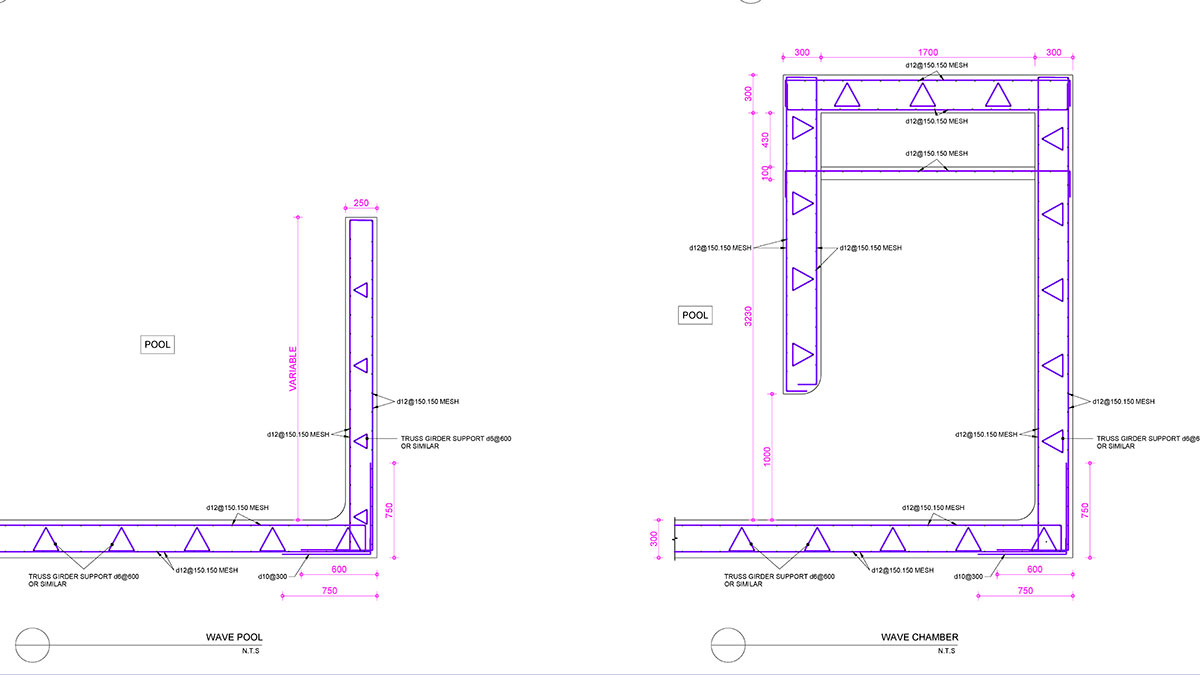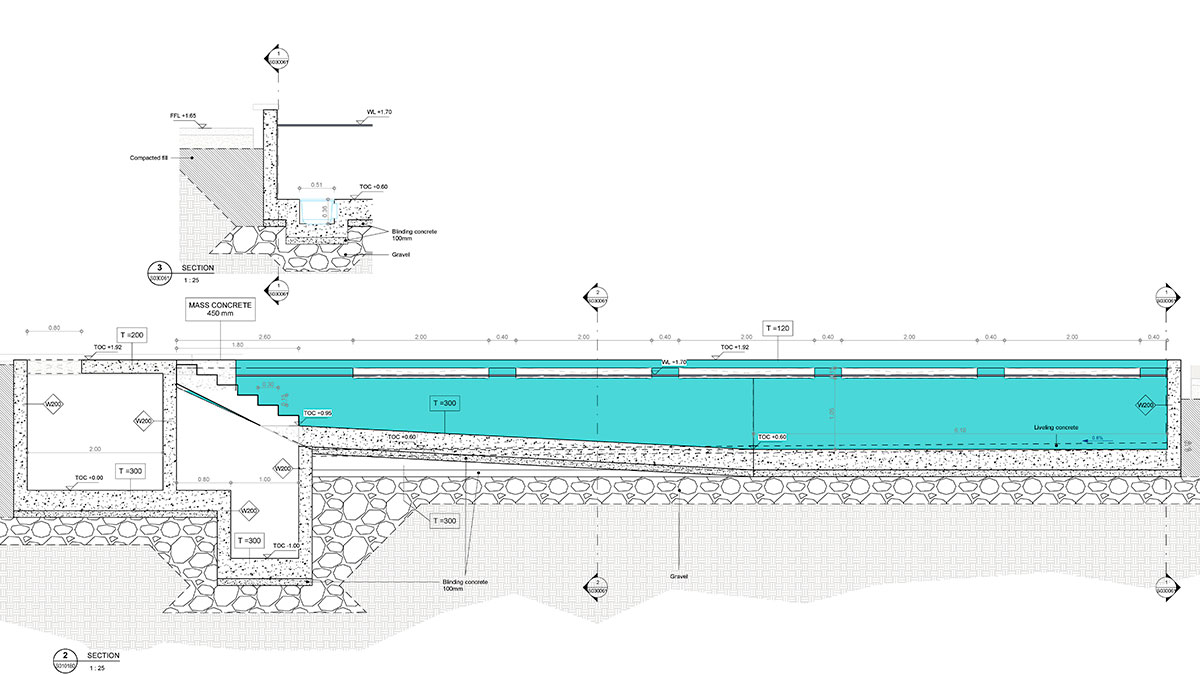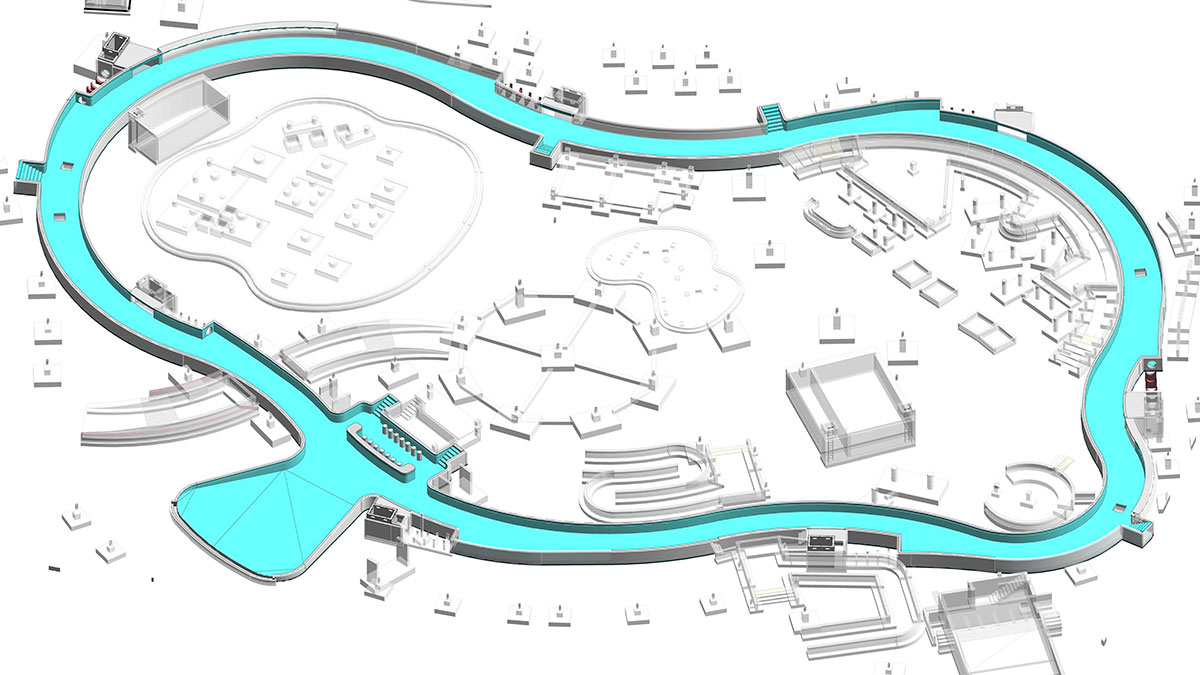Coordination between structural architects and hydraulic engineers is particularly important in leisure and tourism projects involving water attractions, such as water parks, theme parks, hotels and resorts, shopping centres and campsites. The following are the most relevant aspects of this close relationship between structural design and hydraulic design:
–Technical rooms: structural architects must include in their design all the hydraulic equipment (filters, pumps, pipes, etc.) necessary for the operation of water attractions. This equipment is housed in technical rooms which are usually located in basements below ground level. The perimeter retaining walls, the distribution of columns and the opening of openings (horizontal and vertical) must therefore be defined to allow the equipment to pass through and be installed without interference.

–Supporting elements: architects must provide for the design of concrete pedestals to support equipment such as pumps, as well as metal profiles and mechanical anchors for pipe routing. In addition, the pipes sometimes have considerable diameters and are installed both vertically and horizontally. Finally, pipes are often under load or subject to dynamic effects during operation.
-Design of wall penetrations: in this respect, for the passage of pipes, the structural discipline must be responsible for defining the implementation of wall penetrations in the perimeter concrete walls and in those connecting them to the equalisation tank.

–Structural design of swimming pools: in this case, architects must take into account the requirements of experience, operation and safety of the users, as well as those of the water attractions that fall into these pools. In addition, water movement and wave generation systems in wave pools must be considered.

-Design of the slide towers: as far as the structural architect and the design of each exit tower are concerned, the criteria for circulation are decisive, as well as the space and support requirements for the exit parts of each slide, and the layout of the pipes that feed them.

It is therefore essential, in leisure and tourism projects that include water attractions, such as water parks, theme parks, hotels and resorts, shopping centres and campsites, that all these aspects of coordination between structural architecture and hydraulics are taken into consideration. Companies such as Amusement Logic, with the experience and capacity to develop both disciplines simultaneously, offer sufficient guarantees of success.
By Raúl Soriano, Senior Modeller in Amusement Logic’s Architecture Department






